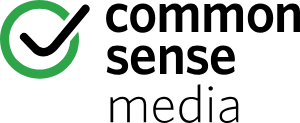
MediaSmarts is Canada’s leading resource for digital and media literacy education. It offers tools, lesson plans, and interactive games that teach students how to think critically about media, recognize bias, spot misinformation, and become informed digital citizens. Perfect for classrooms and at-home learning.
 Ctrl-F is a Canadian program designed to help students (and adults!) verify online information and become expert fact-checkers. Using real-world examples, it teaches strategies like lateral reading and source checking—essential skills in today’s world of information overload and misinformation. A must-have resource for teaching digital literacy.
Ctrl-F is a Canadian program designed to help students (and adults!) verify online information and become expert fact-checkers. Using real-world examples, it teaches strategies like lateral reading and source checking—essential skills in today’s world of information overload and misinformation. A must-have resource for teaching digital literacy.
 Common Sense Media provides trusted reviews and resources to help families and educators navigate media and technology. From age-appropriate movie, game, and app reviews to digital citizenship lessons and privacy tips, it's a go-to guide for making smart, safe choices online. Great for parents, teachers, and students alike!
Common Sense Media provides trusted reviews and resources to help families and educators navigate media and technology. From age-appropriate movie, game, and app reviews to digital citizenship lessons and privacy tips, it's a go-to guide for making smart, safe choices online. Great for parents, teachers, and students alike!
Digital Literacy Tips for Parents
Talk about tech use openly – Make digital habits part of everyday conversations. Ask your child what they’re watching, playing, or reading online.
Model good digital habits – Show responsible screen use by balancing your own time online, checking sources, and practicing kindness in digital spaces.
Explore together – Watch videos, try apps, and play games with your child. It’s a great way to understand what they’re using and how they’re using it.
Teach critical thinking – Encourage kids to question what they see online: Who made this? Why? Is it true?
Use trusted resources – Sites like Common Sense Media, MediaSmarts, and Ctrl-F offer reviews, activities, and tips to help guide your family’s digital learning.
Set boundaries – Create screen time routines and set tech-free zones, like during meals or bedtime, to keep balance in daily life.
Prioritize kindness and safety – Remind your child to be respectful online and to tell you if they see or experience anything that feels uncomfortable.